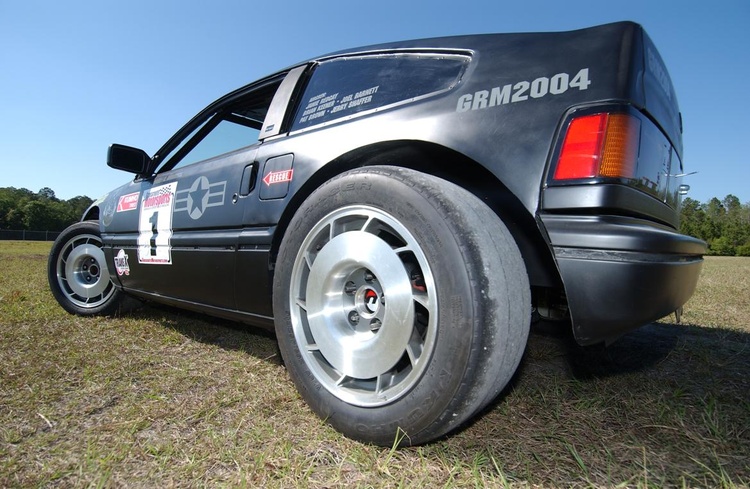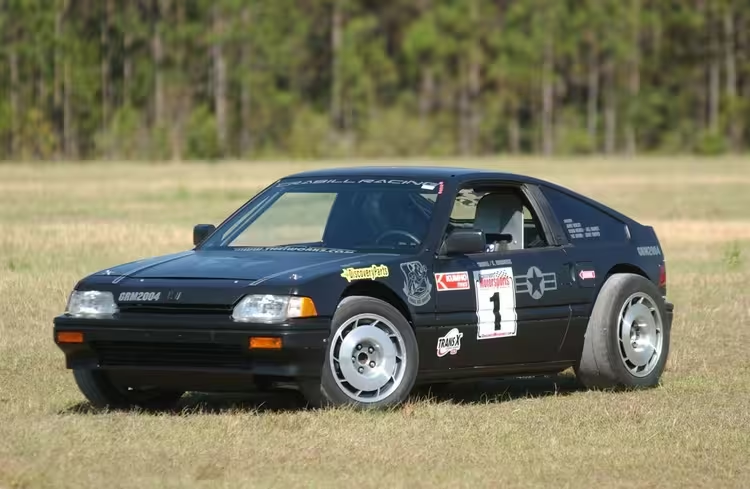[Editor’s Note: This article originally appeared in the December 2004 issue of Grassroots Motorsports.]
What do you get when you put together two Honda CRXs, a Ford Mustang, a Chevy Corvette and a Chevy work van?
Although most people would come up with some kind of corny punch line when faced with this question, Denny Crabill saw it as the recipe for a …
Hatching the Plan
The Crabill team decided that if they were going to enter the 2004 event, it wasn’t going to be with a bolt-together package; it was going to be with something that Denny had been wanting to try for a long time: a radical transplant of a small-block Chevy V8 into a first-generation Honda CRX, the engine driving the rear wheels.
The Mongrel cars built for the past Challenges established the formula that Denny knew worked, since both of those entries were small, lightweight cars that had received big power and did well in the drag race portion of the event. With a little work, the package could be made to handle well.
The choice of an early CRX was easy, Crabill explains: “The first-gen CRX HF is the lightest, cheapest commonly available car. It weighs in at around 1745 pounds from the factory, and after looking at CRXs closely, as long as we were going to convert it to rear-wheel drive, I thought we could physically stretch the wheelbase to 90 inches to comply with NHRA rules [for the drag racing portion of the event]. “And I think the CRX looks pretty sporty, too.”
Chassis and Suspension

There were two 1986 CRX HF chassis used in the build. The first was purchased for $50, and had taken a hard front hit. Fortunately, the cost was completely recouped by selling the dash glove box, door speakers and miscellaneous interior pieces. That car was the source for all of the major exterior body panels from the A pillars back.
The second car was purchased for $150; it was rusty, but had good bodywork and glass….
Click Here to Read the Full Original Article at Grassroots Motorsports Online Articles…

